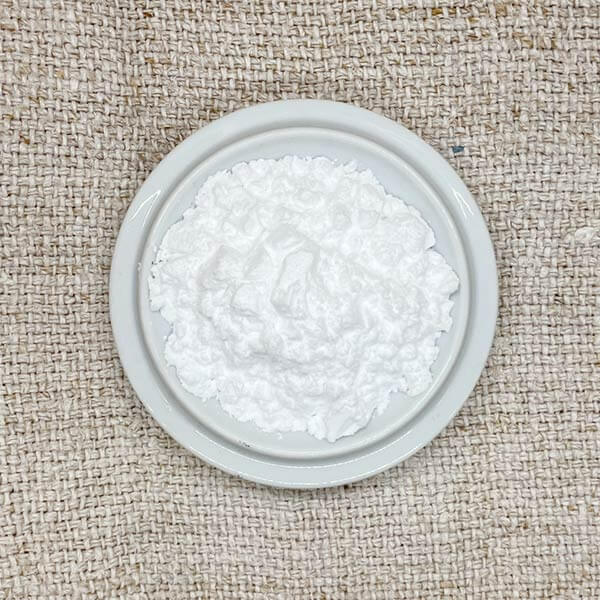
Even as the weather cools and the days get shorter, we are still in the dye pots and love the ease of aluminum triformate for mordanting wool. Aluminum triformate is another alum mordant, and we’ve adapted a couple of recipes to create a mordant method that’s a little different than our standard hot water techniques. Very simply, we create a mordant container or bucket and mix the aluminum triformate mordant with cold water. We then use that bucket and add skeins of clean wool yarn to it and let it soak overnight or longer. Then, when we’re ready to use the yarn, we remove it, rinse it lightly, and head to the dye pot.
The advantage of aluminum triformate is that you can reuse the mordant in the mordant bucket for multiple skeins, and it’s fairly easy to add a few skeins before a weekend forage, and have them ready when you return with your found treasures! Recharging the bath is simple, and the mordant lasts for a long time. We used ours for 6 months before discarding it
Instructions are online at botanicalcolors.com website. If you haven’t tried it yet, give it a try and let us know what you think!
Aluminum triformate is a room temperature mordant for all natural fibers including wool and silk. It will also work with plant fibers but we’ve found that it’s a little acidic and can dye lighter on plant fibers than other alum mordants such as aluminum acetate.
It also works on a gpL (grams per Liter) calculation or a weight of fiber (WOF) percentage and we’ve used it successfully with both methods.
Each of these methods have their advantages for the artisan dyer. If you want to dip a scarf or two in mordant and then move on to dyeing without a lot of calculating, then the gpL method is good for you as there is no additional weighing, heating or handling hot mordanted items. If you are a wool dyer, the room temperature solution avoids felting or harshness through overheating. On the other hand, if you need to keep careful records and repeat colors with consistency, then the WOF method will make it easy to reproduce your process.
Aluminum Triformate Advantages
- Room temperature mordanting – no additional energy necessary other than warm water when starting your mordant bucket.
- Saves water as you re-use the mordant bath until the mordant is consumed and you can add more mordant liquid as necessary (bucket method).
- Aluminum triformate is easy to use with minimal odor or wafting powder and dissolves easily.
- Keeps wool fibers from being overhandled as compared to other mordant methods.
- 200 grams (7 ounces) is reported to dye up to 5kg (11 lbs) of fibers. Results may vary due to fiber type, weight and other factors.
If you choose the gpL calculation, mix up a batch of the solution and mordant at room temperature for multiple baths. Once the liquid level and the mordant strength seems to be lessening, you can “top off” the bath with additional solution. If you keep track of your fiber weights and how long your fiber is in the mordant, you will be able to track when to add more mordant solution and keep your mordant bucket going.
You can also use aluminum triformate the same as our other mineral mordants and calculate the weight of fiber (WOF) and create a mordant bath, immerse your fibers in the room temperature bath, hold for 4 hours, and then remove, rinse, and proceed to dyeing. This is a good method if you need to replicate the same process to achieve the same results. Keep in mind that there is still plenty of mordant left in your mordant bath and you can save it and reuse it for other projects.
